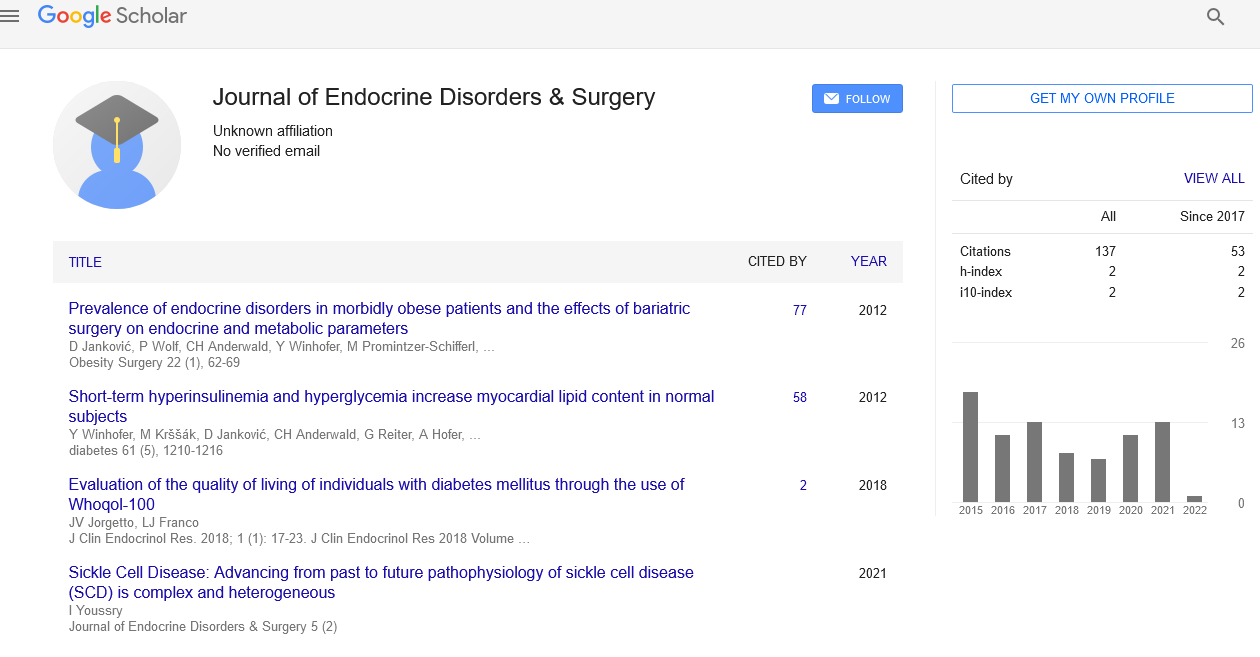
Sign up for email alert when new content gets added: Sign up
Author(s): Xueying Zheng
Background: The magnitude of burden of diabetic peripheral neuropathy in south-asian population is undetermined, there being a paucity of large-scale studies. Electronic medical records (EMR) of patients offer a promising avenue by which data analysis can be used for clinical research. Objectives: To determine i) the frequency of peripheral sensory neuropathy and ii) its association with various factors using Electronic Medical Record (EMR) database of diabetic patients. Methods: This was a retrospective cross-sectional study conducted at Diabetes Management Centre (DMC), Services hospital, Lahore which undertook a comprehensive review of electronic medical record (EMR) from first visit of 12,485 diabetic patients, over a threeyear period. The frequency of peripheral neuropathy was derived from database analysis of specific signs and symptoms including bilaterally symmetrical symptoms of peripheral numbness or paraesthesia, burning / pins and needles sensation. Positive examination included insensitivity to Semmes-Weinstein monofilament (SWM), pinprick sensation, absence of ankle reflexes and vibration perception threshold using biothesiometer.
Data was analyzed in SPSS v.25.Chi square and logistic regression analysis was done for association of DPN with body mass index, waist circumference, blood pressure, type and duration of diabetes, age, gender, HbA1c, LDL levels, Total cholesterol levels and eGFR. Results: The frequency of DPN was 84.6% in a sample size of 12485. More females(61.1%)had neuropathy as compared to males(38.9%), similarly greater number of type2 diabetics(91.6%) were found to be suffering from DPN as compared to type1.The mean±SD age of population was 50.85 ±11.13, duration of diabetes 6.70 years ±6.70, BMI 28.26±4.75, HbA1c 9.25 % ±2.31s . Logistic regression analysis predicted 81% of the model correctly. The factors with a significant association with peripheral sensory neuropathy by applying Chi square test included BMI, waist circumference, duration of diabetes, nephropathy, poor glycemic control and hypertension,while serum LDL did not show a positive relation with neuropathy.
Peripheral neuropathy is a microvascular complication of diabetes contributing to significant disability, poor quality of life and substantial increase in health care utilization. The clinical signs and symptoms of DPSN can vary in severity from asymptomatic to mild sensory impairment to intractable pain and frank foot ulcers occasionally necessitating amputation. There are certain clinical predictors of DPSN like poor glycemic control, long duration of diabetes, obesity and hyperlipidemia which can prompt the clinicians to screen for DPSN and undertake timely protective measures with an aim to preventing lifelong disability.
The routine evaluation of DPSN by most clinicians is based on reported patient symptoms like burning, constricting, throbbing, freezing or knife-like pain in feet or negative symptoms including numbness or walking on cotton wool and physical examination findings of absent deep tendon reflexes and / or gross sensory disturbance in feet like failure to elicit touch or pain sensation or proprioception. These clinical findings serve as the basis of therapeutic intervention. In developing countries such as Pakistan, nerve conduction studies for detection and confirmation of DPSN are costly and also not universally available. World prevalence figures for diabetic peripheral sensory neuropathy (DPSN) reach up to as high as 50 % [1]. Diabetes is one of the major contributors to the national disease burden in Pakistan with 6.9 million cases reported in 2014 anticipated to rise to an alarming 14 million by 2040 [2]. Despite this, data about the frequency of DPSN and its associated risk factors is scanty. Reported frequencies from neighboring countries in the region vary widely from as low as 2.9% to an alarming 77.1% [3,4]. Some international studies vary widely from 7% to 56.1% [4,5]. One of the reasons for this variability could be the small sample size of the studies, which is always a limitation whenever paper-based records and forms are used by researchers. Electronic medical records (EMRs) have the advantage of being more comprehensive and easily searchable for data analysis. They serve as a portal for reliable, efficient and authentic everyday data for addressing research needs and creating intelligent algorithms that facilitate individualized patient care based on real-life health trends derived from ample-sized data
PDF





